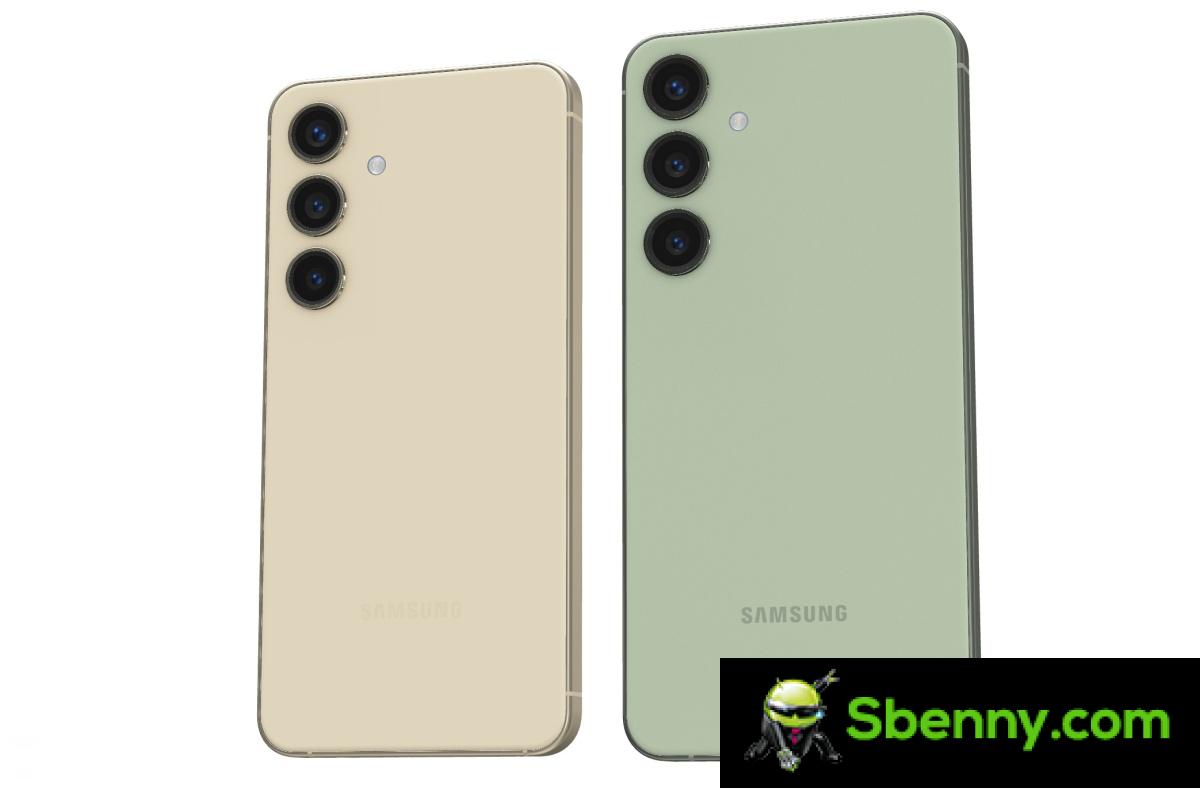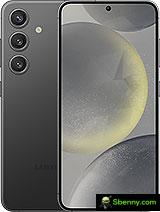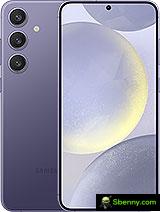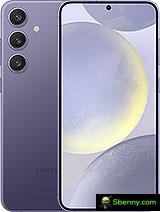The Galaxy S24 family is here and, in our opinion, each device in the trio has its place under the sun. Traditionally, the Plus model tends to attract less attention from buyers, and honestly, we don’t expect things to be any different this year. However, as we’ve said on a few occasions this year, the S24+ is probably closer to the Ultra than that in terms of features, too. A large QHD display and a nearly identically sized 4,900mAh battery look pretty tempting. Meanwhile, the S24+ is still a bit cheaper than the S24 Ultra, while the step up from a vanilla S24 to an S24+ isn’t that bad.
Summary:
However, the Galaxy S24 maintains its clear advantage if you are looking for a compact flagship device. And even if you don’t mind a larger device, the S24 is still the cheapest way to get into the shiny new S24 family with its Galaxy AI and seven years of software updates. Let’s do a little comparison for anyone wondering between the Galaxy S24 and the S24+.
To get started, you can compare the complete datasheets or continue directly with our editor’s evaluation in the text below.
Size comparison
Samsung hasn’t fundamentally changed the footprint of the S24 or S24+ from last year. The Korean giant has managed to mount slightly larger displays (6.2 inches and 6.7 inches respectively), especially thanks to the space savings allowed by LTPO technology.
The size difference between the pair is quite substantial. The Vanilla Galaxy S24 remains one of the few modern and compact flagships on the market. Meanwhile, the S24+ has a display almost the size of that of the S24 Ultra. The S24 is thinner and shorter than the S24+. They are more or less the same in terms of thickness and the weight difference between the two is around 30 grams. By the way, it’s perhaps interesting to note that the S24 Ultra weighs a whopping 232 grams, which is a full 36 grams more than the S24+, making the S24+ a good option for a Samsung flagship with a large display that saves on both weight and terms of performance. to measure.
The styling is identical between the vanilla S24 and the S24+. Aside from the size difference, the two are externally identical. They also have the same color options: Onyx Black, Marble Grey, Cobalt Purple, Amber Yellow, Jade Green, Sandstone Orange, and Sapphire Blue. Some of these are only available directly in the Samsung store.

This year’s new design detail, shared between the S24 and S24+, is the matte finish. It is particularly visible on the central bezel of the phone.
Speaking of the central chassis, its material has been updated compared to the S23 generation and is now Armor aluminum 2. It should improve both drop and scratch resistance. On top of that, you still get the excellent Corning Gorilla Glass Victus 2 protective glass on both the front and back of the phones. The new Gorilla Glass Armor remains exclusive to the S24 Ultra this year. Both phones also enjoy a total IP68 protection rating.
View the comparison
Both the S24 and S24+ feature excellent Dynamic AMOLED 2X panels made by Samsung. Both belong to the same generation and advertise a lot 2,600 nits of maximum brightness.
In our standardized tests, the S24 succeeded 785 nits on the cursor e 1,401 nits in automatic mode, while the S24+ did 781 nits on the cursor e 1,452 nits in automatic mode. Once we started reducing the white area, the brightness went beyond 2,000 nits, so we have no doubt that the advertised values are achievable.
Both phones this year also get LTPO technology, which has not only helped Samsung fit slightly larger panels in what is essentially the same footprint as the S23 and S23+, but also means better dynamic control of the frequency update. Samsung’s LTPO technology is excellent, as is the company’s refresh rate switching logic, going as far as matching the video playback framerate with the display’s refresh rate.
The only blemish on the excellent display record seems to be the fact that the S24 and S24+ still rely on 8-bit panels while many competitors have moved to 10- or even 12-bit panels. But honestly it’s very difficult to notice in practice.
Battery life
Both the Galaxy S24 and S24+ have larger batteries than the S23 generation. The vanilla S24 has a slight increase of 100 mAh and its battery is now nice and rounded 4,000 mAh. The S24+ has added 200 mAh over its predecessor and the battery is now 4,900 mAh. That’s almost as much as the 5,000 mAh of the Galaxy S24 Ultra.
Samsung didn’t really increase battery capacity this year to get better battery life, but rather to combat the seemingly higher power draw of the new generation Exynos 2400 and Snapdragon 8 Gen 3 chips.
However, compared to the older S23, the vanilla S24 saw a slight increase in its active usage score. 12.06pm hours out of such a compact phone are good.
As for the S24+, it achieved only a slightly higher active usage score than the S24, recording a half past twelve hours. It might seem strange on the surface, but it starts to make sense when you consider the extra effort of managing QHD resolution on a much larger screen.
Charging speed
Like previous generations, the vanilla S24 only gets Samsung’s 25W super-fast charging standard. The S24+ is rated for 45W super-fast charging, just like the S24 Ultra. In reality, the difference in charging speed between the two, while still noticeable, isn’t that dramatic.
In our tests the S24 unit went from zero to 29% in 15 minutes then 59% in 30 minutes with a full charge 1:15 hours. In the meantime we managed to charge our S24+ on 41% in 15 minutes, 74% in 30 minutes and a full charge is required 0:58 hours. Using a 25W power adapter with the S24+ will add an extra 10-15 minutes to the time it takes for a full charge, and 30 minutes of charging will give you 60% charge instead of 74%.
It’s worth noting that while the Galaxy S24+ supports the faster 45W charging standard, the cable that comes with the phone is only rated at 3A and isn’t capable of reaching those speeds. On the other hand, Samsung seems to sell all of its 45W chargers with a 5A cable included.
It’s also worth noting that neither phone comes with a charger in the box, so unless you get one with some sort of promotion from your retailer or carrier, you may have to go out and get one. Samsung’s super-fast charging is PD-based, so any good PD charger should work, but we’d still recommend buying a Samsung one to make sure it has the correct PPS profiles.
In addition to wired charging, both the S24 and S24+ support 15W Qi/PMA wireless charging and 4.5W reverse charging.
Test the speakers
Both the Galaxy S24 and S24+ have a hybrid stereo speaker setup with a dedicated bottom-firing speaker on one end and an amplified earpiece that serves as the second speaker. Both phones handled a Very good in our tests, which is noticeably better than the previous generation S23.
Despite the size difference, the S24 and S24+ have virtually identical sound systems in both volume and actual sound quality.
You can compare the sound of the two phones under controlled acoustic conditions with the samples below. Just make sure you have headphones on and the volume is turned up.
Performance
After offering the S23 generation only with Qualcomm chips for better or worse, Samsung has now returned to its two-chip solution for the S24 and S24+. The S24 Ultra still only gets a Snapdragon 8 Gen 3. But, depending on where you live, you could end up with a Snapdragon 8 Gen 3 or an Exynos 2400 inside your S24 or S24+. The latter hypothesis is much more likely since only the USA, Canada and China get the Qualcomm variant.
At least you get a flagship chipset in both phones, which is probably much more appealing in the smaller S24 given that true flagships in a compact form factor are so hard to find. Our initial test batch was run on European S24 and S24+ units with the Exynos 2400 chipset. For reference, our S24 test unit is the 8GB/256GB version, while our S24+ unit has a 12GB configuration /512GB. We recommend avoiding the base S24 128GB as it uses slower UFS 3.1 storage.
We have yet to test the Snapdragon version of the S24 and S24+, but preliminary results show that Samsung’s chipset appears to be very close in terms of overall performance to Qualcomm’s flagship this year. However, temperatures may still be different between chips. Samsung said it is updating its vapor chamber cooling solutions across the S24 range, perhaps to account for the increased heat production from the new chipsets.
While the thermal throttling behavior of the Exynos-equipped S24 and S24+ is by no means terrible, we expected a little better on average. That said, the surface of neither phone gets too hot to handle under load and of the two, the larger S24+ seems to handle heat slightly better. Not by much, though.
In terms of performance scores, the S24+ and S24 achieve nearly identical numbers, although the larger S24+ posts slightly higher results on average. It doesn’t hurt that all Galaxy S24+ units come with 12GB of RAM, while the regular S24 is still stuck at 8GB (with no particular release in China).

SAMSUNG
Galaxy S24
AnTuTu 10
1,696,727
Geekbench 6
2,177 single-core
Geekbench 6
6,747 multicores

SAMSUNG
Galaxy S24+
AnTuTu 10
1,774,819
Geekbench 6
2,201 single cores
Geekbench 6
6,926 multicores
Camera comparison
The Galaxy S24 and S24+ come with what appears to be unchanged camera hardware from last year’s models. This includes a somewhat pedestrian but still comprehensive triple setup on the back, coupled with a better selfie unit than most.
- Wide (main): Samsung ISOCELL (S5K)GN3 50MP, 1/1.56″, 1.0μm, f/1.8, 24mm, PDAF, OIS; 4320p@30fps, 2160p@60fps
- Telephoto: Samsung ISOCELL (S5K)3K1 10MP, 1/3.94″, 1.0μm, f/2.4.67mm, PDAF, OIS; 2160p@60fps
- Ultrawide: 12MP, 1/2.55″, 1.4μm, f/2.2, 13mm, fixed focus; 2160p@60fps
- Front camera: 12MP, 1/3.2″, 1.12μm, f/2.2, 26mm, PDAF; 2160p@60fps
It’s worth pointing out that, once again, Samsung has declined to upgrade the ultrawide with an autofocus unit that can double as a macro. This remains a feature of the S24 Ultra.




Samsung Galaxy S24 Daylight Samples: 0.6x • 1x • 2x • 3x




Samsung Galaxy S24+ Daylight Samples: 0.6x • 1x • 2x • 3x
The S24 and S24+ are expected to capture virtually identical photos across the board. Photos in broad daylight are hard to fault. They offer great detail, contrast and dynamic range. Colors are vibrant but not off the charts – Samsung has stopped with that overly saturated look for a while now.
Compared to last year’s S23 generation, we’d say the S24 generation introduces a bit more contrasty images, but it’s not a huge difference.
Sharpness has been toned down compared to the previous generation and details are more natural. The more restrained processing this year resulted in a slightly grainier texture. We don’t mind one bit of that luminance noise when it means finer textures and a more organic presentation.




Low light examples Samsung Galaxy S24: 0.6x • 1x • Night mode • 3x




Low light examples Samsung Galaxy S24+: 0.6x • 1x • Night mode • 3x
Predictably, the S24 and S24+ capture great images even in low-light conditions. Exposures are well judged and dynamic range is pleasantly wide: there’s no pronounced brightening of shadows or aggressive retention of highlights, but it’s not as if there are large swathes of darkness or overly blown-out highlights. We would call it a balanced approach.
The grain that we saw during the day is also present at night, although the level of detail maintained makes us appreciate once again the compromise that Samsung has chosen.
Verdict
The choice between a Galaxy S24 and an S24+ is a bit strange. In our experience, most users tend to have a size preference for their phones and the S24 duo is clearly meant to cater to a different audience in this regard. Chances are, if you make the wrong choice, you’ll end up with a device that’s too small or too large for you.
So, the only way to find yourself in a conundrum between S24 and S2+ seems to require absolutely no size issues. Furthermore, arriving at this particular choice probably means that you have also considered and rejected the purchase of an older generation S23 device of any size since, at current prices, you should also be able to purchase an S23 Ultra for the same amount of a vanilla Galaxy S24. . If the S23 generation hasn’t crossed your mind, you should probably consider it first for a better value deal.
That said, you may still want to get a Galaxy S24 of some sort. Maybe the seven years of software support has you excited? Or the new brighter LTPO displays? Or can’t wait to try Galaxy AI? Regardless of the reason, let’s take a look at your options.
The base 8/128GB Galaxy S24 will cost you around $800/€900/£800/. However, you probably don’t want to be stuck with the slower UFS 3.1 storage, so you might want to consider the 8/256GB one at $860/€960/£860.
At the same time, the base 12/256GB S24+ will cost you around $1,000/€1,150/£1,000. However, we are talking about a big difference of around 200 dollars.
If you can spare the extra money, you could also opt for the arguably more future-proof S24+, with 12GB of RAM and a QHD display.
If saving money is more important, then the S24 is the way to go. But again, you should probably consider the S23 generation first as it may provide better value.

- The most compact form factor.
- The lowest price.
Get the Samsung Galaxy S24 for:

- QHD display resolution and larger screen size.
- The 12 GB of RAM in all storage variants.
- 45W fast charging.
- Ultra Wide Band (UWB) support.







Start a new Thread